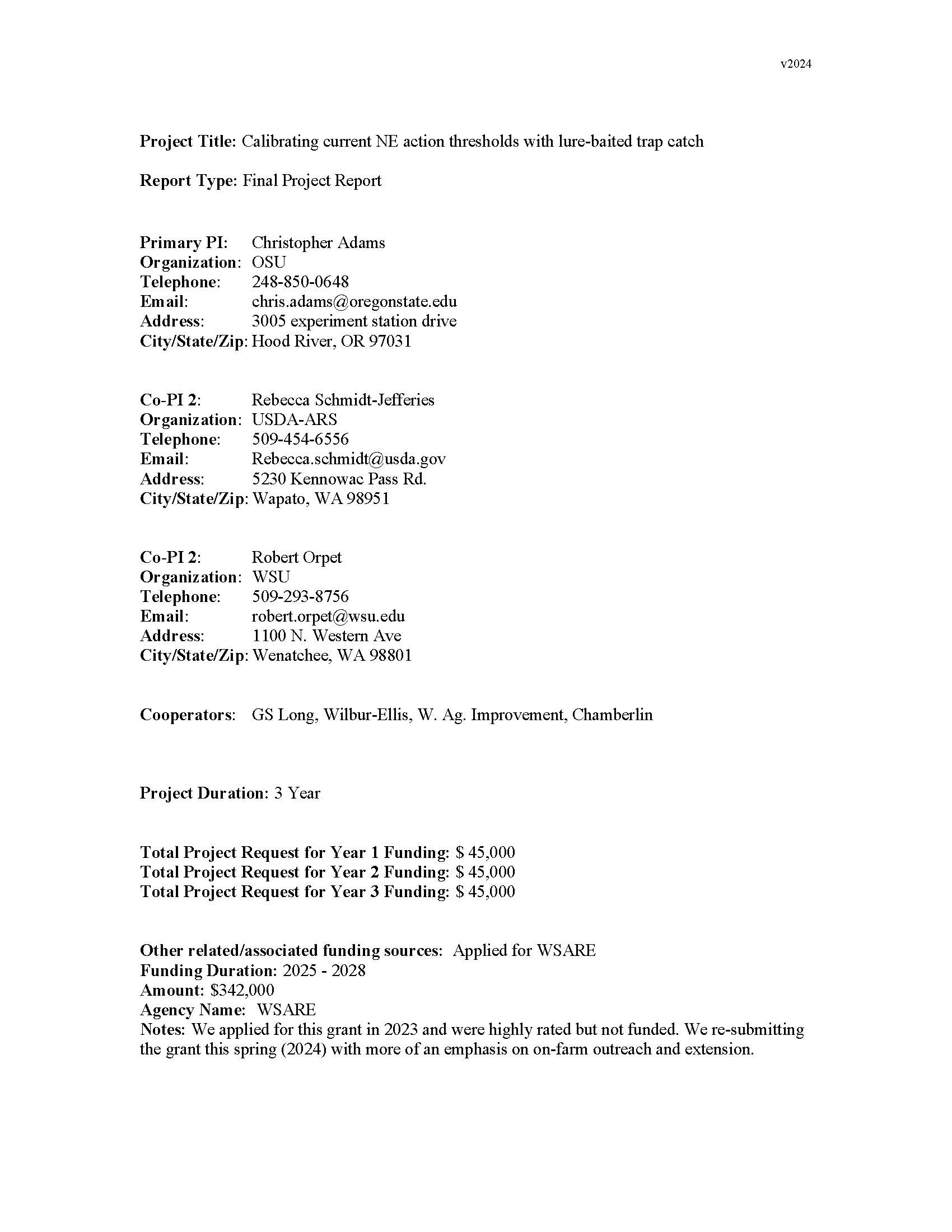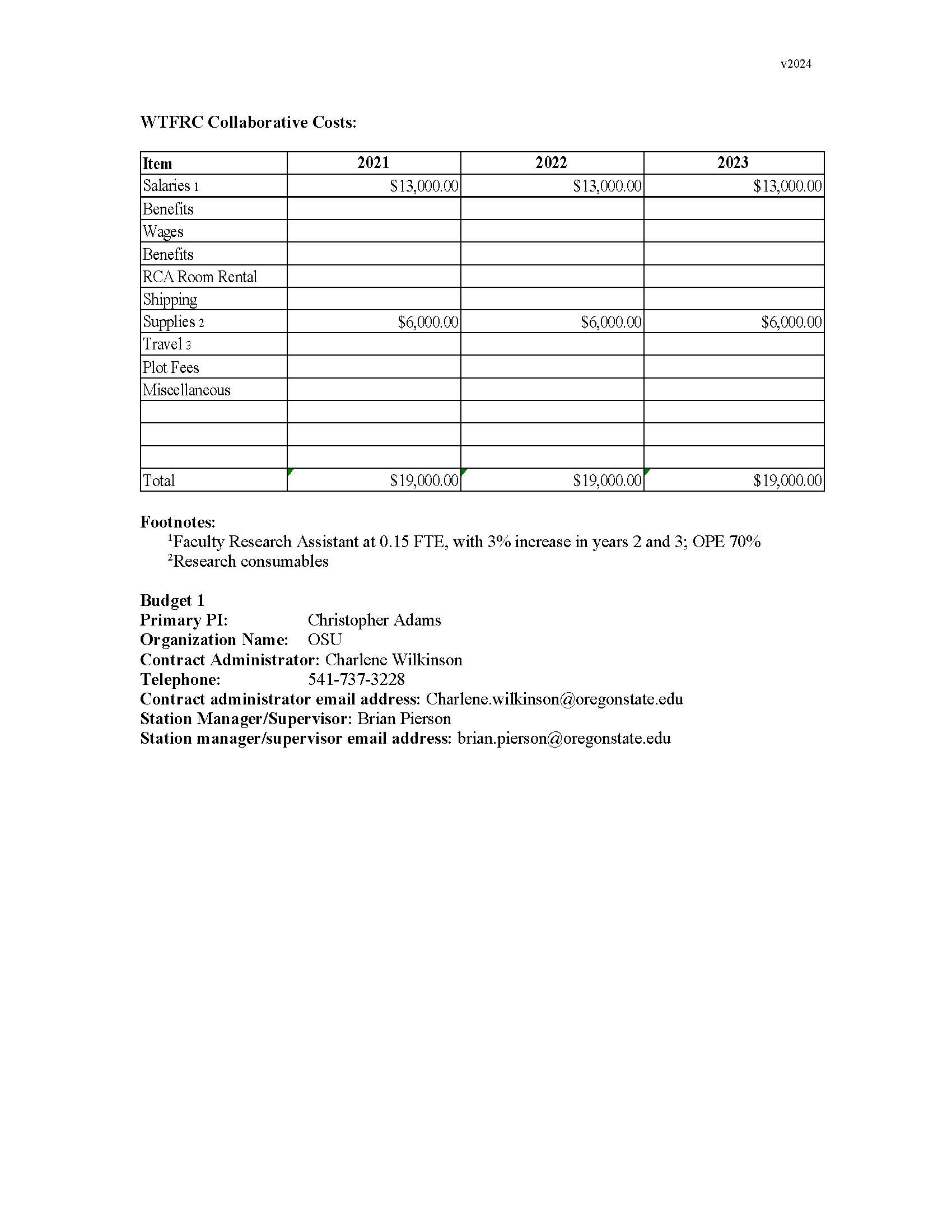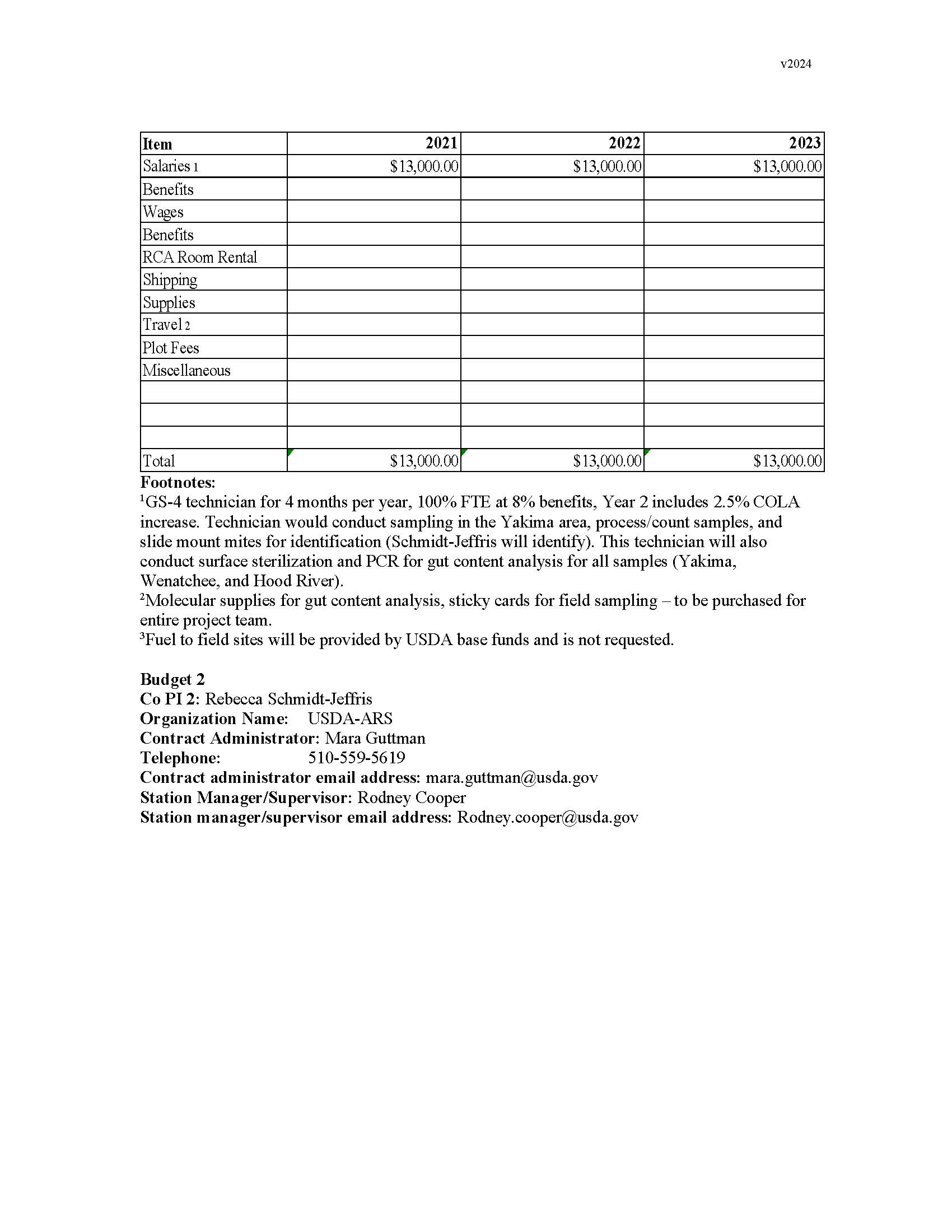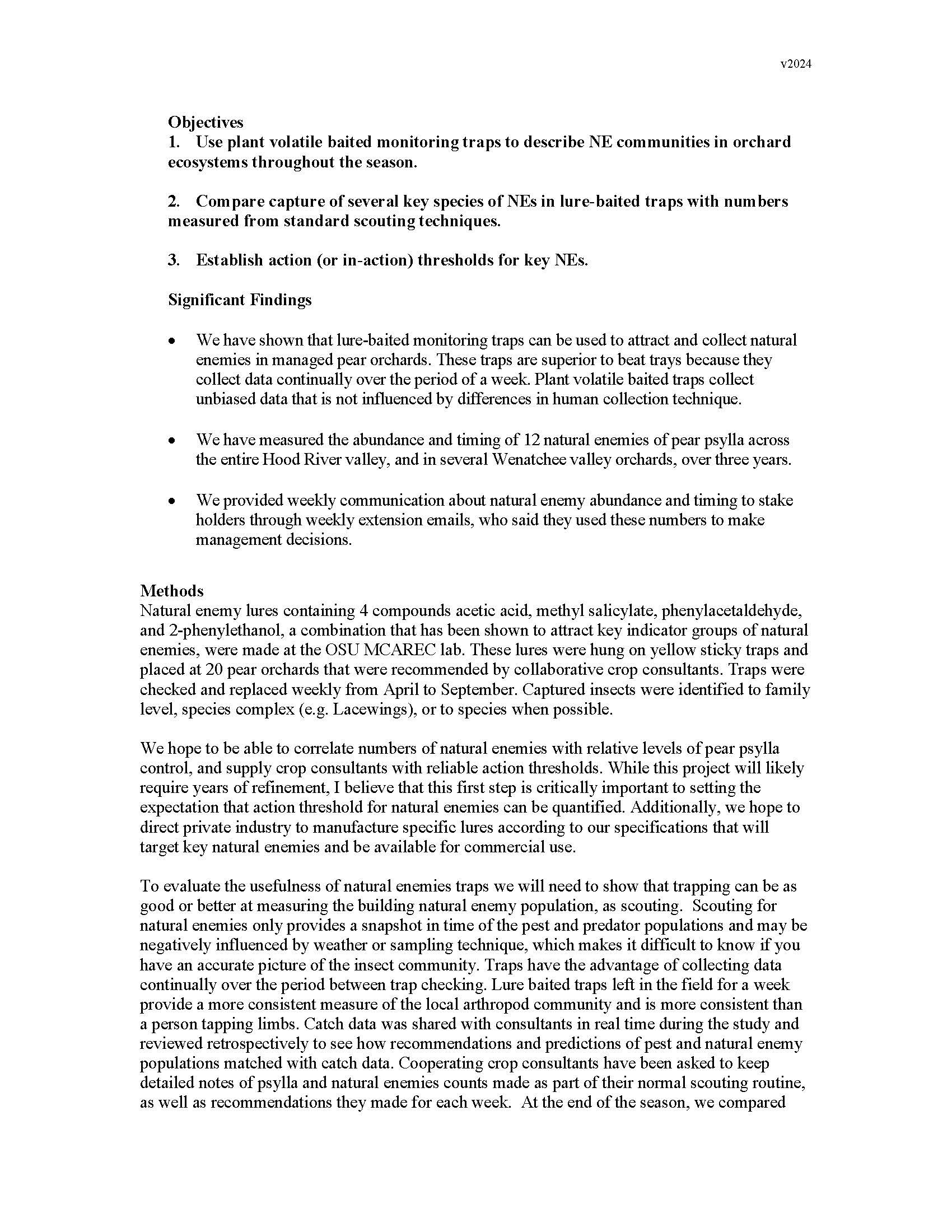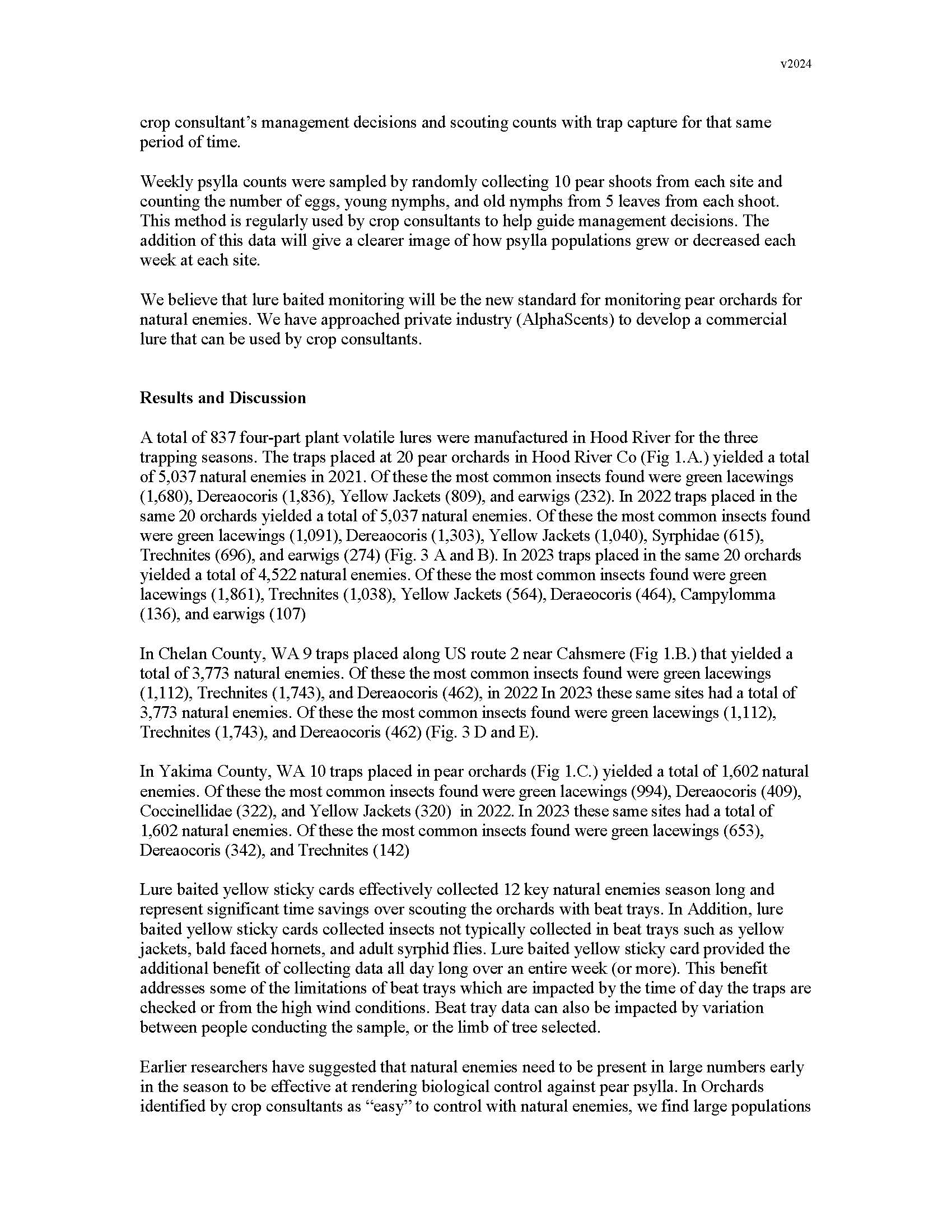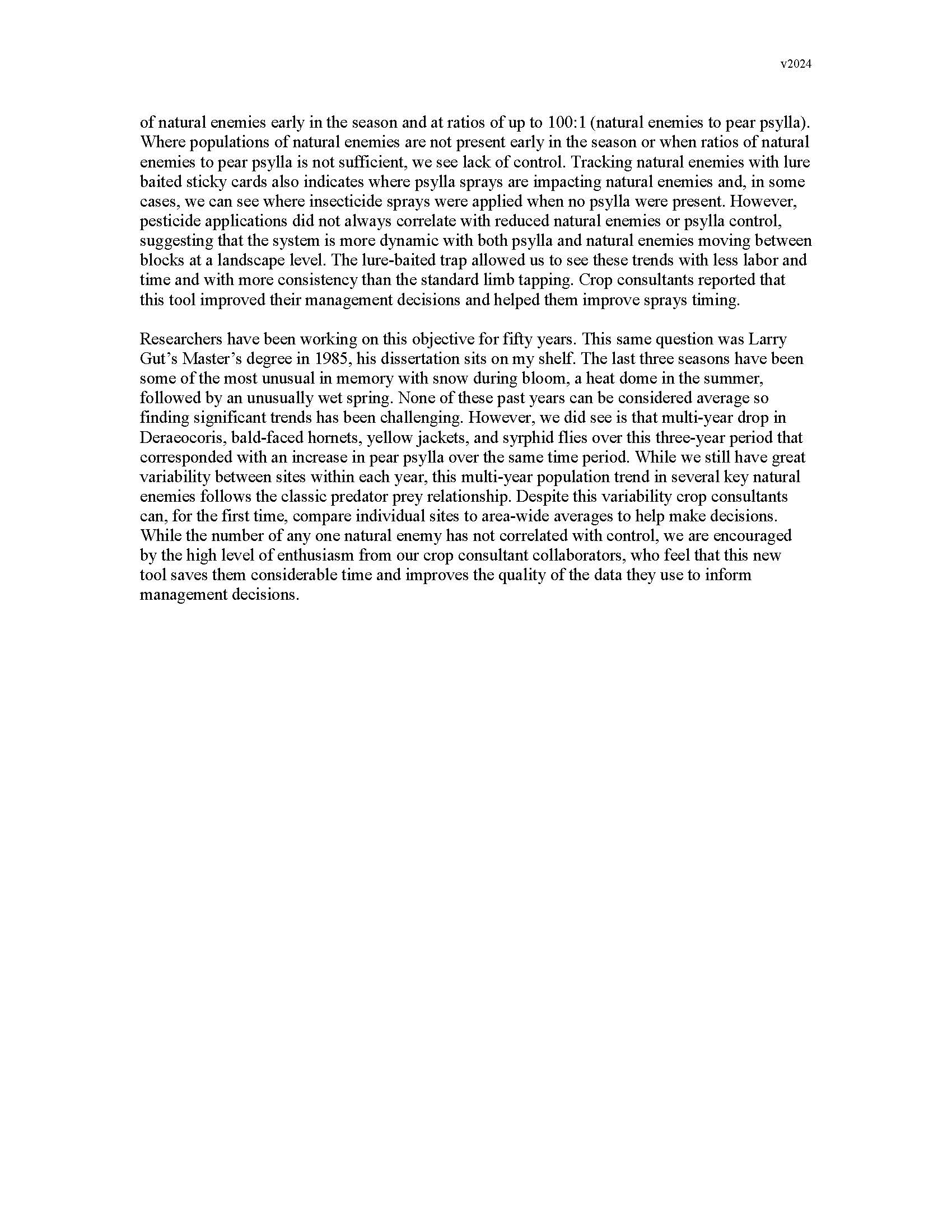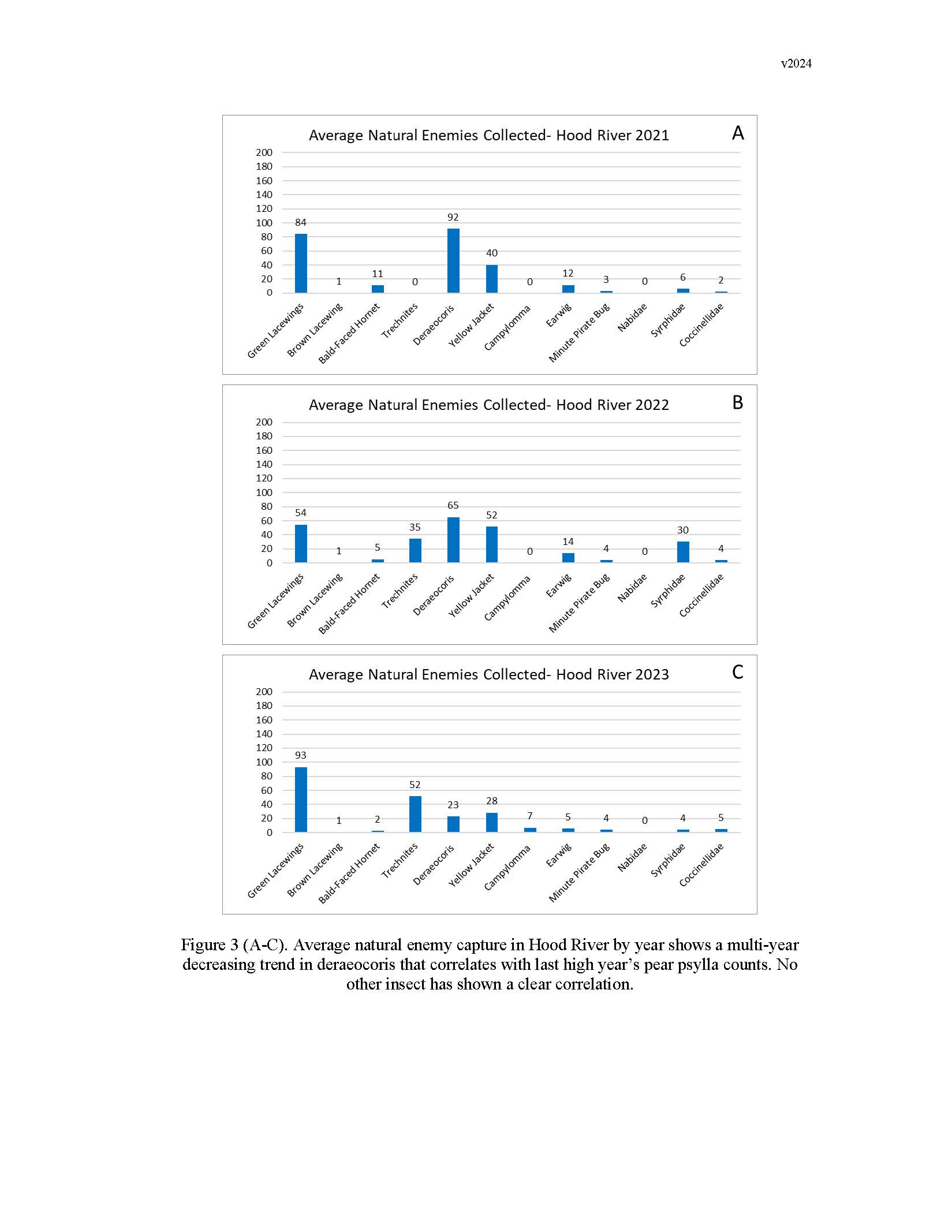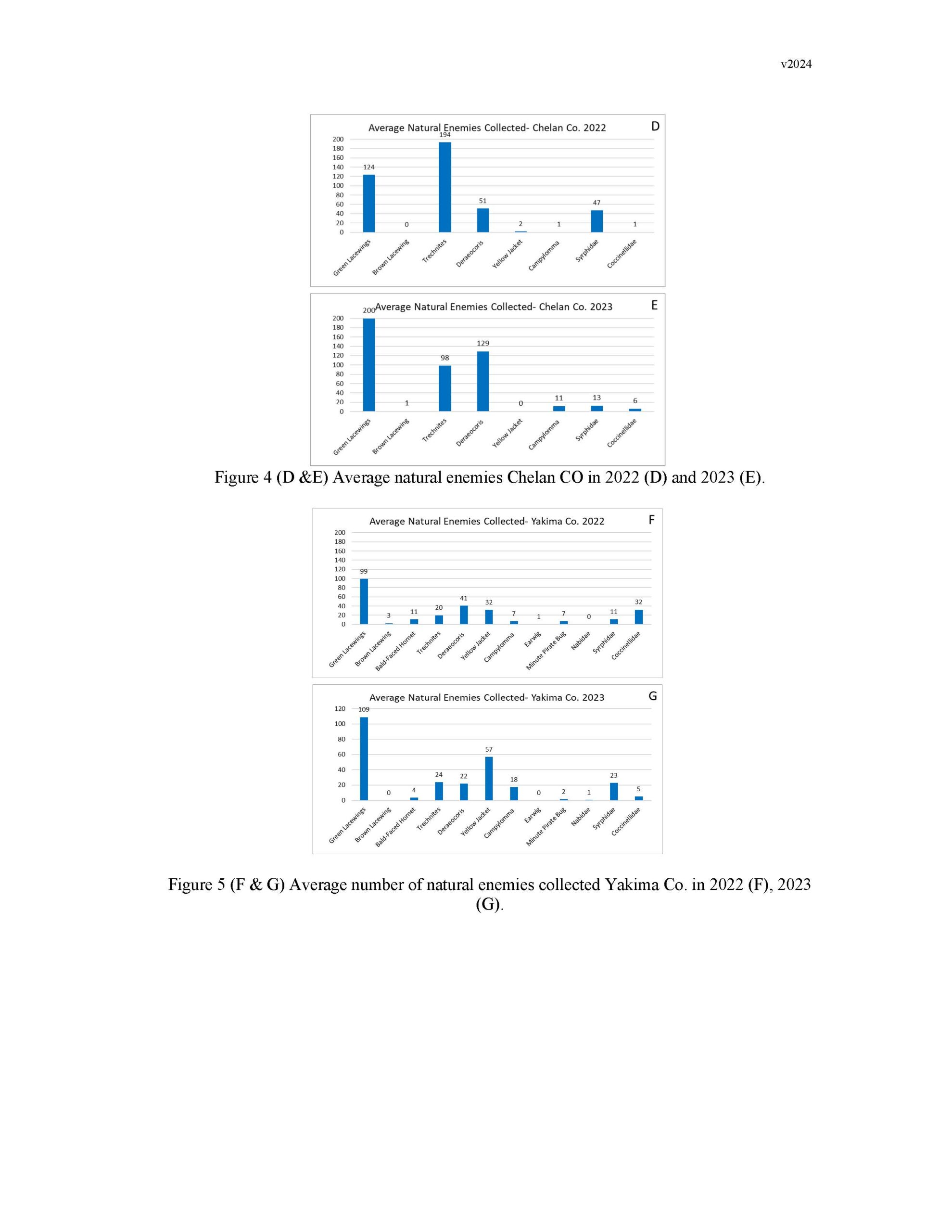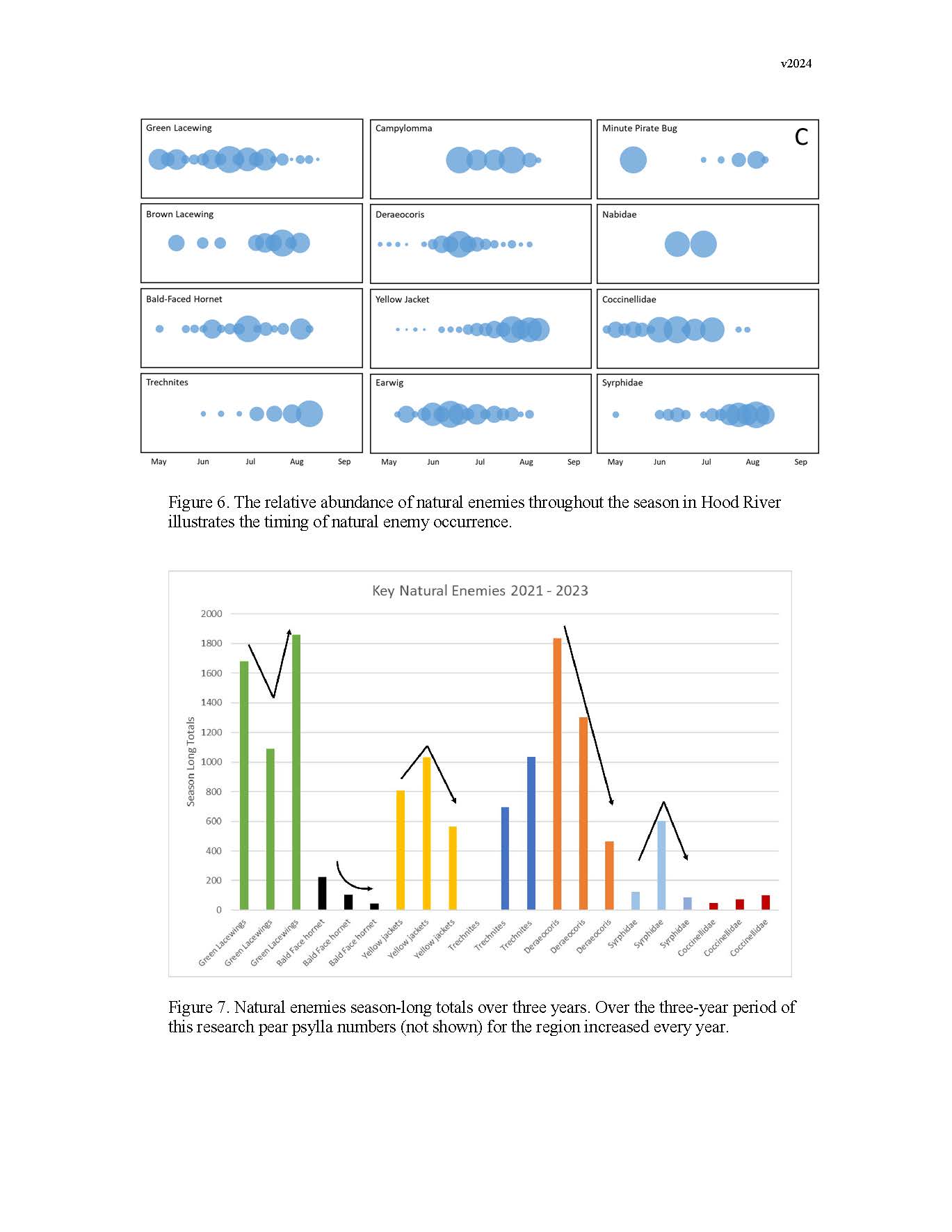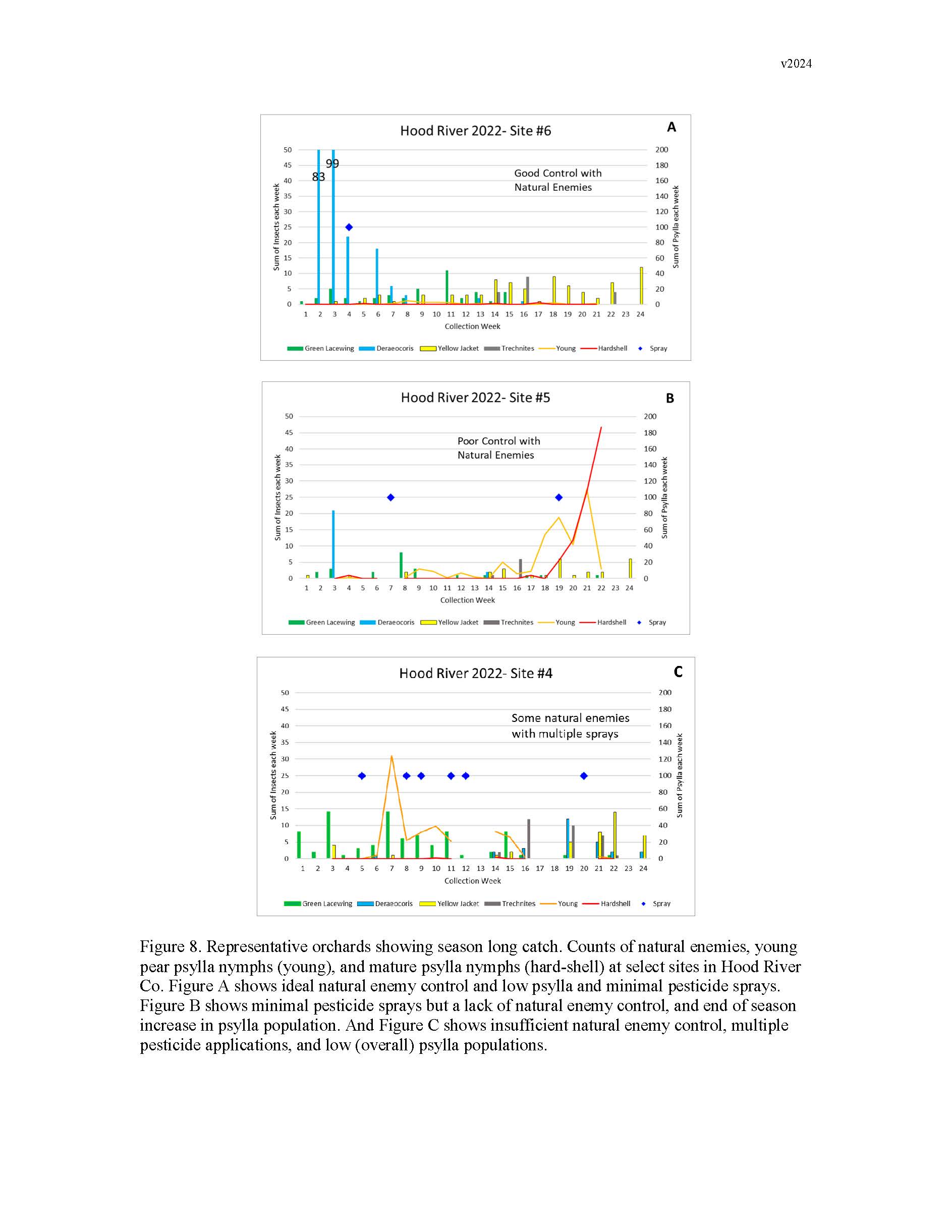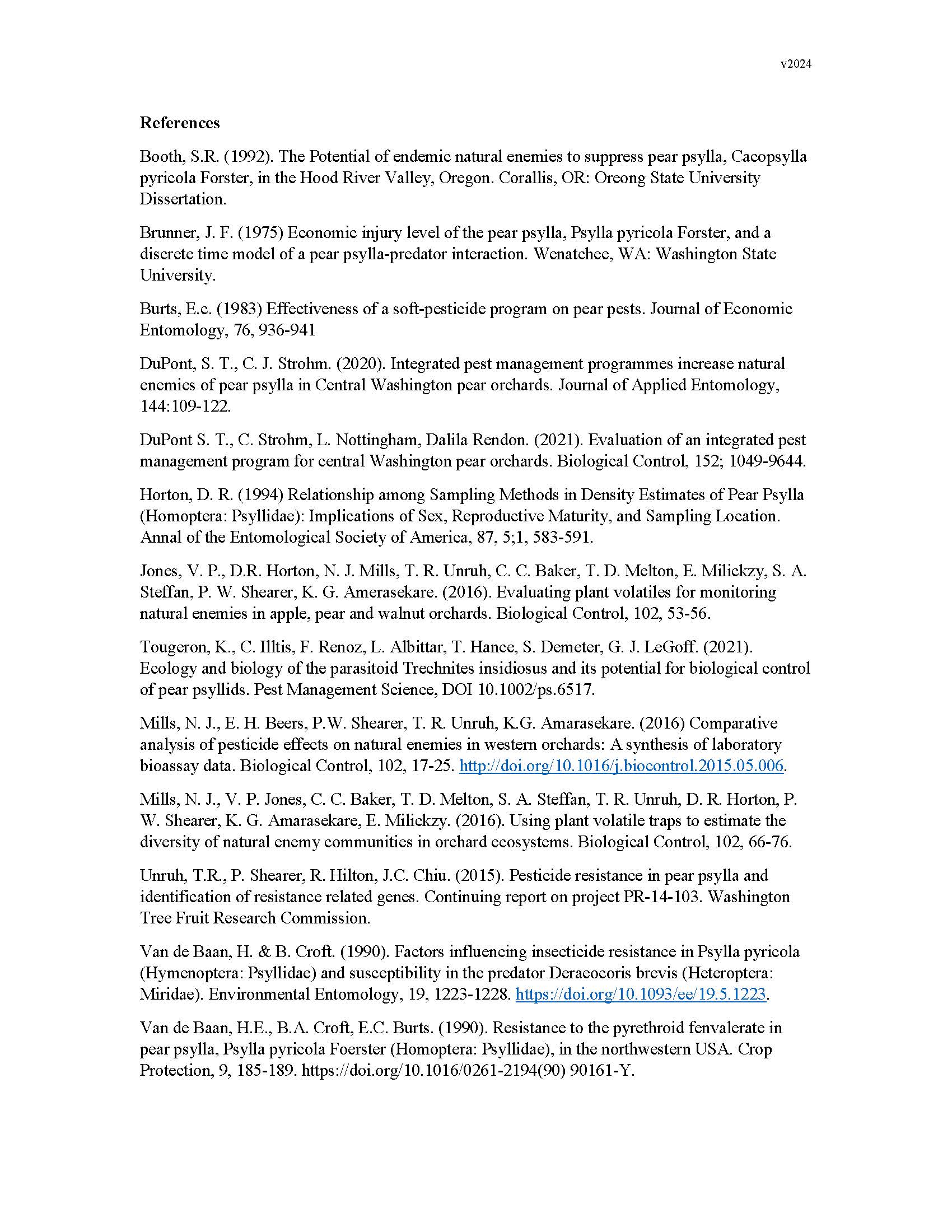Calibrating current NE action thresholds with lure-baited trap catch
Author: Christopher Adams
Published: 2025
Summary: Pear psylla is the most important pest to control for the fresh-market pear producers. Heavy infestations can create large amounts of honeydew leading to sooty mold and russeting, and in some cases tree decline. Pear psylla develops pesticide resistance quickly, making it challenging for growers to completely suppress populations and thus psylla remains a constant threat. Natural enemies of pear psylla have been shown to provide effective free biocontrol in some growing regions, and carful integrated pest management has been shown to increase the numbers of natural enemies available and reduce psylla populations. Assessing the level of available biocontrol remains a challenge for crop consultants. Sampling currently requires extensive scouting, tapping limbs of two dozen trees across 20 acres. The objective of this research was to build on earlier research by Jones et al. (2016) to develop lure-baited monitoring traps for natural enemies of pear psylla to improve data collection and provide crop consultants with a new tool for measuring biocontrol. To do this we selected four plant volatiles that were shown to be attractive to several key natural enemies and produced lures in our lab. The four-component lure included acidic acid, methylsalicylate, 2-phenylethanol, & phenylacetaldehyde. Lures were paired with a yellow sticky card and placed in 20 orchards in Hood River and Yakima over three seasons, insect data was collected weekly and shared with stakeholders through weekly emails. Lure-baited traps reliably collected data on twelve key natural enemies of pear psylla. Lure-baited traps collected more insect data than limb-tapping and caught several species of adult (flying) insects that are not measured from limb tapping. Time required to collect data was significantly less with lure-baited traps vs. limb tapping, which is key for crop consultants. We saw that blocks with high numbers of natural enemies did see lower psylla pressure on average. Biocontrol was not always available in every block, even when pesticides were withheld. Action thresholds for individual insects are still needed but the most abundant natural enemies were green lacewings and Deraeocoris brevis. With the exception of green lacewings and the parasitic wasp Trechnites insidious, all natural enemies were at a three-year low while psylla was at a three-year high in 2023. This pattern looks similar to the classic predator-prey relationship where the predators crash the prey population, and then their numbers in turn decline from a lack of resources. If this pattern holds, we should be able to predict “good years” and “bad years” for psylla pressure. The most important natural enemy appears to be Deraeocoris brevis. Green lacewings can be found in similarly high numbers, but do not seem to follow the predator-prey relationship. Yellow jackets and hornets are important generalist predators but likely eat as many beneficial insects as psylla, so it is difficult to quantify their net affect. Another confounding factor is that some of these insects are moving across the landscape between blocks and are not restricted to a single orchard. Action thresholds will require more research to measure factors such as landscape level movement, total egg capacity, and number of psylla consumed per insect per day. In conjunction with this research, we added pitfall traps for spiders (because I hired someone passionate about spiders, and wanted to give him a project). In that study we found 7 families of spiders, including one new record for the state. Bi-catch from these pitfall traps included dozens of ground beetles, known to be excellent indicators of overall bio-control. These data suggest that the system is more complex and we are only measuring a small part of the system. While action thresholds have not been established at this time, crop consultants feel they have a better understanding of the amount of biocontrol available in these orchards, and have used this data to make their own management decisions. Additional funding has been applied for with WSARE so that we can continue to work on developing action thresholds.
Keywords:

